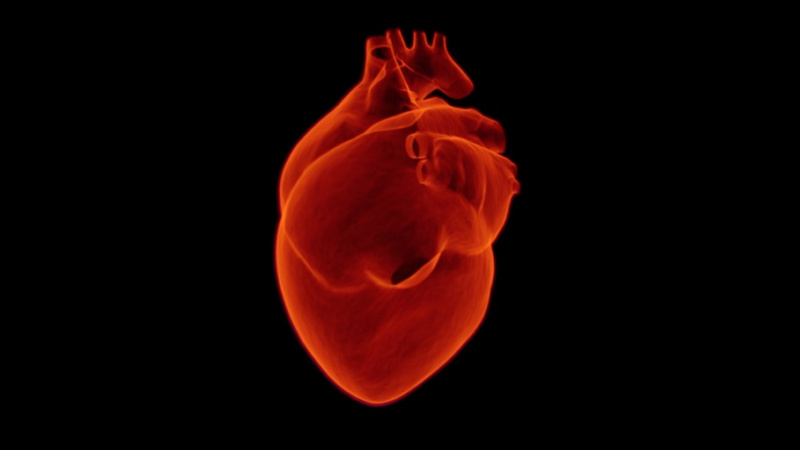
I knew as soon as the chest pain hit that this was different. Not the same vague discomfort that happens sometimes as a consequence of POTS (postural orthostatic tachycardia syndrome,) but full on burning, crushing chest pain that radiated down both arms and up my neck to my jaw. I did what most people in civilized countries would do: I called an ambulance.
And that was my first mistake.
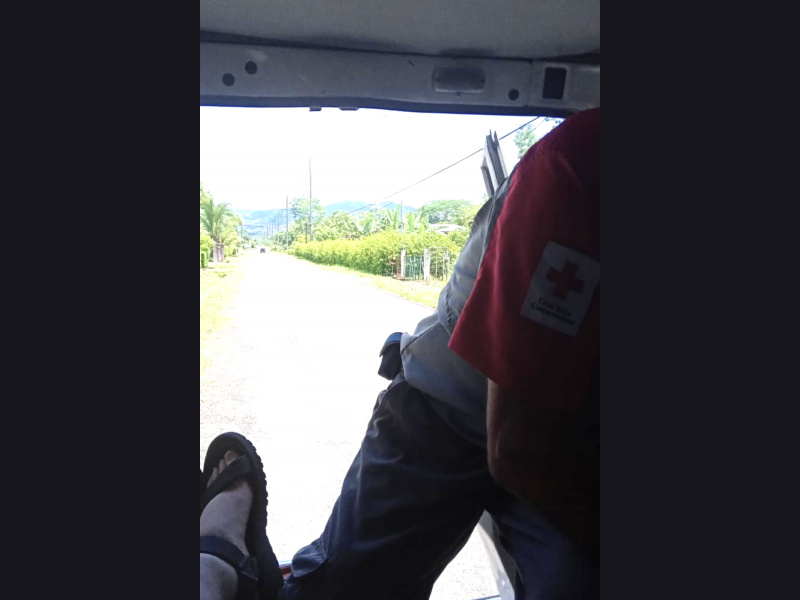
Here in Costa Rica, an ambulance is not quite an ambulance, at least not by the standards most of us consider. They’re driven by Red Cross volunteers who have little or no medical training and certainly no ability to manage an acute health crisis. I was loaded into the back of a stripped-down SUV and trundled off to a local clinic, where staff had difficulty hooking up a twelve-lead ECG and absolutely no idea how to correctly read it. I was declared heart-healthy, then stuffed into a taxi and sent to the nearest hospital facility because—thank God—my blood pressure was high enough to warrant concern.
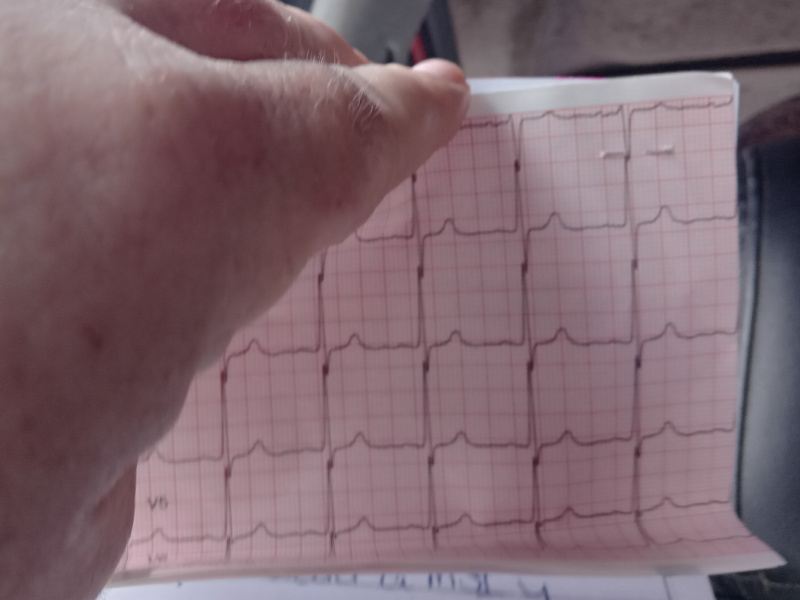
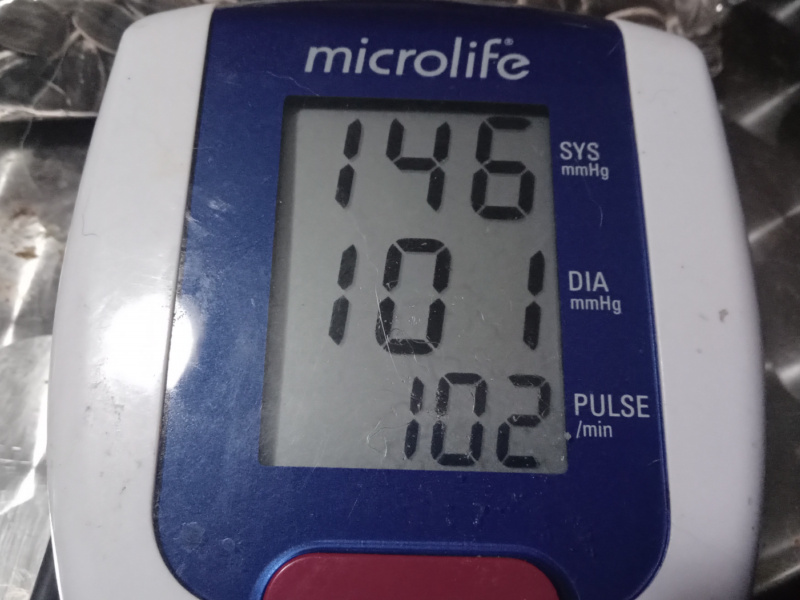
HOSPITAL SAN CARLOS
My troubles were only beginning.
In the urgency department at Hospital San Carlos I was shown to a wheelchair around 1 p.m., in which I sat for a total of nearly five hours before seeing a doctor. During this time, I requested the help of English-speaking staff, who I told about my continuing chest pain with the request of a serial troponin test. I was reprimanded for being “impatient” and told that I would receive the same care as everyone else… I’d be seen by “Classificationes,” who would then decide if my case was urgent enough to see a doctor. Security personnel were as numerous as nurses and it was clear that any protest would get me ejected from the urgency department onto the street.
Hours later, “Classificationes” saw my “normal” ECG and declared me “fine,” even though I tried to talk to them about an NSTEMI heart attack, which by then I felt sure I was having. I’d been there more than four hours with moderate chest pain, diaphoresis, and visibly impaired perfusion when I finally saw a doctor, who sat behind a desk and never conducted a physical examination, and who ordered a troponin test probably only because I demanded one. Then I was moved to an observation room for yet another hour before anyone came to take blood for testing.
During my time in the observation room, I was seated on a piece of furniture alongside several other patients. My feet were turning purple, my blood pressure was at or above 210/100, and none of the nursing staff could find a vein in either of my arms to start an IV. Yet this apparently triggered no alarms for anyone there… only after my troponin test came back elevated did anyone finally figure out that I might have an actual problem.
From there I was hustled away to an observation ward where I received an anticoagulant and other medications that are appropriate for emergent cardiac care. I had gone from being threatened into silence by nursing and security staff for complaining of chest pain to being prohibited to stand or use the bathroom on my own. I was on continual monitoring, still suffering from substernal, radiating chest pain that did not subside until after ten p.m. that night.
Later that night, they moved me to a ward in a different area of the hospital where every patient around me was either semi-conscious or completely unconscious and dependent on life support. I was told I could not get up to use the bathroom, yet I was not provided with a bedpan or any wrappings or pads to use in the bed. One nurse told me if I wanted Pampers, I should have brought some from home.
It’s important to note that one of my pre-existing conditions, dysautonomia, causes bladder control issues that I can do nothing about. I take medication to control this which was not provided to me in the hospital. This situation was disregarded, and for two days I lay there periodically steeping in my own piss, to the point my back became scalded and raw. Asking for help was useless more often than not, but finally someone brought me a bedpan. It filled after a few uses but was not emptied, and at one point during the weekend part of its volume spilled on my bed when I tried to use it. That’s when I tossed the bedpan and all its contents through the door into the hallway and walked myself to the bathroom despite energetic protests by staff.
Saturday morning, staff failed to bring me the correct medication to manage my tachycardia, therefore I experienced elevated heart rate with chest pain. The cardiac monitor was left disconnected for more than an hour and once again, my complaints of chest pain were disregarded. At one point during that day, the patient in the bed across from me experienced a severe drop in blood pressure and her breathing became agonal. Worth noting is that prior to being disabled from lupus and POTS, I worked for an ambulance service in Virginia and had completed my training as an EMT-I, which includes emergency cardiac care. I have a professional working knowledge of acceptable patient management and life-threatening emergencies. I most certainly understood what I was seeing and all of the ramifications.
I can only hope that this patient had some form of Costa Rican DNR (Do Not Resuscitate,) because zero lifesaving measures were performed, and in fact the patient stopped breathing unattended and was, for all intents and purposed, dead for at least half an hour before nursing staff noticed. She may have been having random cardiac activity based on what I could see on the cardiac monitor, but certainly nothing compatible with life.
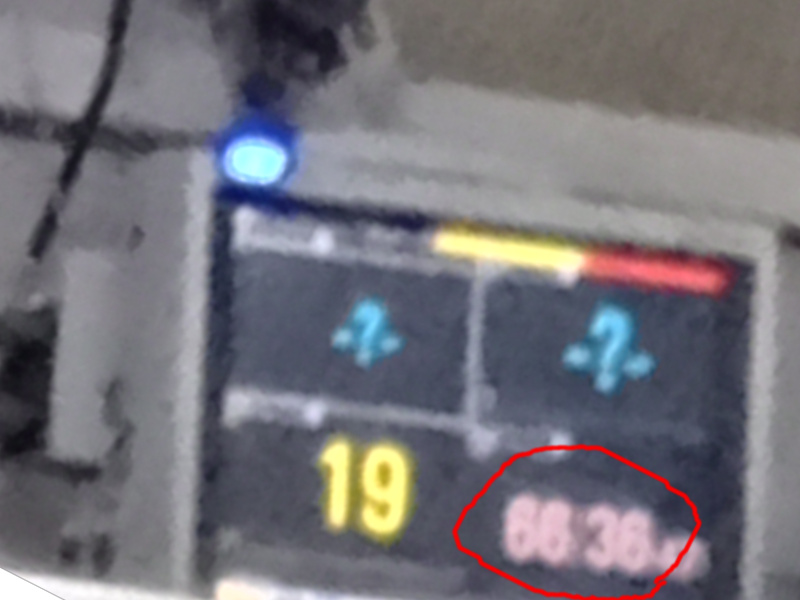
After her death, which may or may not have been called by an actual physician, nursing staff left her naked body spreadeagled on the bed for everyone in the room to observe as they prepared to bundle her for the morgue. I could see every detail of her genitalia from where I sat across the room. I was horrified for this woman and for the other critical patients in the ward, all of whom could see as clearly as I could what their own near future held for them if they died before release from that hospital.
On Sunday, I captured the following video of hospital staff ignoring my reports of chest pain and dismissing the fact that I had been disconnected from the monitor and given wrong medication. I posted it to YouTube while still hospitalized in case the staff found a way to make my phone disappear.
I am convinced that the possibility of falsified charting is very high in this case, as I monitored the chart myself and saw several entries that did not agree with what had actually occurred at the time indicated, such as medication administration. I cannot prove this or rule out that language barrier issues may have been a factor in my interpretation of the documentation, but I do know for a fact that I was not given the correct dosage or medication on more than one occasion and the result was chest pain.
On Monday I finally saw a cardiologist, Dr. Fletes, who I told about the inadequate care and negligence I’d experienced. He performed an echocardiogram and put me on the treadmill. Because of POTS (and possibly exacerbated by the new heart muscle damage,) my heart rate became tachycardic within seconds. It had gone from 80 while seated to 95 upon standing, and in less than one minute on the treadmill it was 125 so we discontinued the test. Dr. Fletes does not speak English, so the best information he could give me was to confirm the heart attack and say that he would transfer me to a different hospital the next day.
Back in my bed in the ward, once again I was left disconnected from the heart monitor, and the medication administered to me was not according to prescription. Rather than continue submitting to the gross negligence I’d suffered at the hands of Hospital San Carlos staff, I left the hospital and sought care elsewhere.
HOSPITAL MEXICO
In Costa Rica, healthcare operates on a dual system. There is public healthcare available to all and then there is private healthcare, available only to the insured or wealthy. Private healthcare includes facilities like CIMA and Clinica Biblica. I knew that a very good cardiologist works out of the Santa Ana Clinica Biblica facility, so the morning after I walked out of Hospital San Carlos, I made a beeline for her office. She was able to offer me a bit of advice about how to proceed, so proceed I did, straight to the urgency department of Hospital Mexico. I chose this public healthcare hospital over continuing with private healthcare after a few quick text messages with a lovely Tico friend of mine who gave me straightforward information about my choices.
The contrast between Hospital Mexico and Hospital San Carlos could not be more striking. Within thirty minutes of my arrival in the urgency department of HM, I’d had blood drawn for serial troponin (after five days it was still over 200, but the serial draw they performed told them the numbers were going down,) my heart and lungs listened to (something no one ever did at HSC,) chest radiographs, and administration of appropriate cardiac medications, in particular an anti-thrombolitic.
The problem I encountered was that the address I’m using at the moment is in San Carlos. Costa Ricans don’t get to pick and choose their hospital if they are using public healthcare. They can only be served by the facility indicated with their physical address. What made HM able to provide care in my case is because I presented as an emergency and because I insisted (and rightfully so) that our San Carlos address is only transitory, because San Carlos happens to be where our bus mechanic is located, not where we actually live. This taught me an important lesson.
When I do apply for residency here in Costa Rica, I will be sure to apply with an address that puts me in the jurisdiction of Hospital Mexico. With all of my autoimmune and cardiac issues, I need competent healthcare and San Carlos simply does not seem to offer that. This is an important thing for anyone to note who is planning a move to Costa Rica: what you choose as your physical address can profoundly affect the quality of healthcare and emergency services you are entitled to receive.
As horrified as I was by the poor quality of care I witnessed and experienced at HSC, I was even more awestruck by the extremely high level of care I received at HM. During the years I worked for an ambulance service in the U.S., I delivered patients to and worked clinical shifts in some of the finest Level One trauma centers and cardiac care units in North America. I can assure you that Hospital Mexico stood in fine company with those facilities in their care and treatment of me.
On Tuesday, one week and four days after the initial heart attack, I had a cardiac catheterization performed at Hospital Mexico. It was an excruciating procedure for me, most likely because of all the pre-existing issues I have with autoimmune disease. I experienced a great deal of pain during and after the procedure, pain that particularly after my experience doing clinicals in a cardiac lab, seemed unusual both to me and to my caregivers. Whatever causes my blood vessels to perform so poorly in circulating blood above the level of my heart also causes them to be nearly impossible to find for routine IV insertion, and surely affected the catheterization procedure. And, as it turns out, this same issue with my blood vessels was almost certainly the direct cause of the heart attack itself.
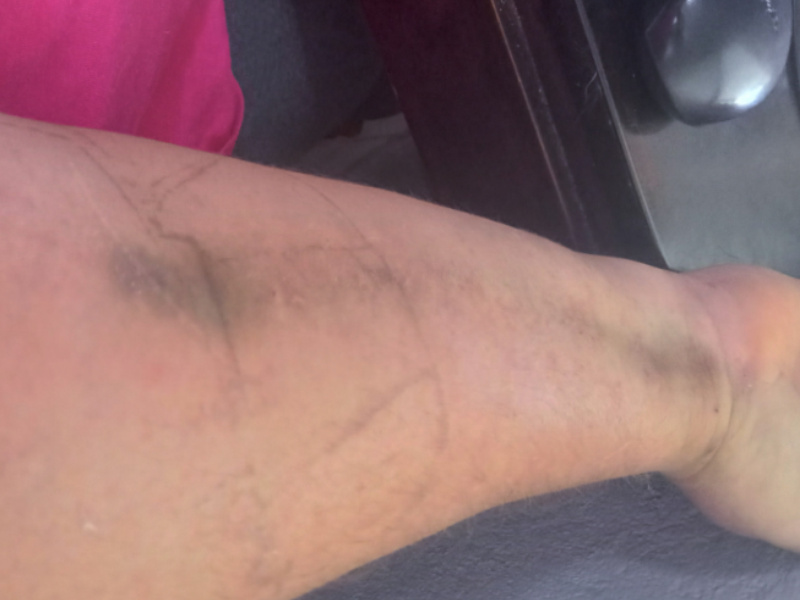
The angiogram showed healthy arteries on both sides of my heart, the “arteries of a fifteen-year-old,” according to the doctor. There were no plaques, no scarring. Every structure he visualized during the procedure looked healthy. Therefore the official diagnosis—which came as no surprise to me—was arterial spasm, meaning that instead of a blockage in the artery, the artery itself had seized up exactly as the vessels in my hands and feet seize up to cause symptoms of Reynaud’s syndrome, except this time it was my heart that received an inadequate blood supply and suffered injury because of it.
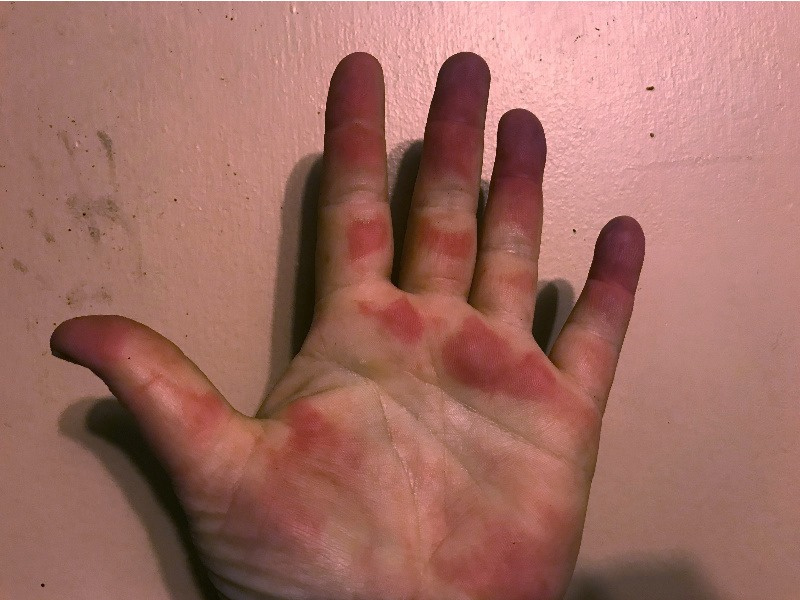
In the end, I did come away from this experience with measurable damage to the cardiac muscle of my heart, in all likelihood a consequence of the hours I sat untreated in the urgency department of Hospital San Carlos. Had I received timely assessment and appropriate care, blood flow could have quickly been restored to the area of my heart affected by this event and the damage from ischemia would have been minimal. As it stands, I’ll spend months and possibly years fighting to regain quality of life as my heart muscle remodels itself and heals from the damage.
I believe with every fiber of my being that the medication regimen prescribed by the cardiac team at Hospital Mexico is appropriate and highly therapeutic for my particular case. Because of my POTS diagnosis and the rather extreme dysautonomia I suffer as a consequence of it, the first line treatment for post-infarction patients will not work for me. I can’t take ACE inhibitors because they cause my blood volume to drop and my blood pressure to bottom out. But an angiotensin receptor blocker, or ARB, seems to be doing a great job of keeping my heart happy without creating more orthostatic symptoms.
I’ll write a follow-up post soon from a bit more of a medical standpoint about my issues with lupus, POTS, Reynaud’s Syndrome, and how they coalesced to create a “perfect storm” that resulted in this heart attack. I believe that my case would be well-considered as an example of how POTS and autoimmune disease can be a dangerous combination, one that may be under-recognized in the field of cardiology and emergency medicine when it comes to patient history-taking and decisions for treatment.

You're such a survivor. The things you've been through, my goodness. Sending big love!
Thank you, Katrina. I love you!
How scary! I'm so sorry to hear about what happened to you! I hope you recover quickly. I've heard a LOT of good things about the healthcare in Mexico. A couple former bloggers from Steemit (Tangerine Travels) moved down there in 2018 and started a YouTube channel and they had nothing but good things to say about the care, they said in most cases it was better and far cheaper than it is here in America. Take care of yourself and get lots of rest!
Hi, Eric. You know... I am so glad I persisted until I ended up at Hospital Mexico. I have no idea why it's called that, since it's in Costa Rica, but I wouldn't care if it was called Hospital Narnia at this point because the care they gave me was excellent. I would have to say it was probably better care than I would have received in many U.S. hospitals. I really credit them with saving my life, perhaps not that I would have died from this particular event, but that left unaddressed, my condition might have ended up killing me down the road. And I believe they have prevented that.
Oh, I misunderstood! I thought you traveled to Mexico for better care but it was the name of the hospital. I'm so glad they were able to stabilize your condition and that you got out of that first hospital. The state of healthcare is atrocious here in America. They are a LOT of good people in the profession but they aren't trained to get to the root of the problems anymore but just find the drug that masks the symptoms. I hope you continue to get better. Please take care of yourself!
I could not agree more about the state of healthcare in the U.S. For exactly the reason you mentioned, it took just over fifteen years for me to get a diagnosis for lupus and rheumatoid arthritis. I can only wonder how much nerve and organ damage could have been prevented if only my doctors had pursued the cause of my symptoms instead of just giving me random drugs to keep me quiet about them.
How long it took to get diagnosed - lupus, Lyme, vestibular migraine, it's all attributed to being psychosomatic, especially fibromyalgia - "it's all in your head" - think positive, will yourself to be healthy, and yeah, right, you will be. I'm so sorry you can't seem to catch a break with these medical unprofessionals. Heartbrreaking. You are quite a survivor!
Thank you, Carol. :-) Yes, I lived with the "it's all in your head" for more than fifteen years. If one more doctor had said that to me I would probably have punched them.
How horrific! It is extremely fortunate you - finally - had enough abuse and went to HM. I am very glad you survived, and hope your recovery from your ordeal is swift and full.
Get better quick!
The ordeal was definitely rough. But the outcome was good in many ways. Thank you for the well wishes!
I came across this as I was surfing through posts. I truly people like you are survivors! That is more than an event! I am so glad that you untangled the roadmap to good healthcare. I live in Virginia and was contemplating Costa Rica for many different reasons... the one showstopper was medical care, which I am always told is amazing, then I hear stories like this.
I appreciate you sharing your story and I am still thinking of that poor woman who dies across from you and your youtube video! Yikes!
You have my respect and much luck with your new doctors!
!LUV (because pizza just isn't good for you!)
(2/5) gave you LUV. H-E tools | my wallet | discord | community | <><
H-E tools | my wallet | discord | community | <><
HiveBuzz.me NFT for Peace
I lived in Southwest Virginia before I came to Costa Rica myself. The healthcare here is definitely better than the healthcare there in the forgotten corner of the state.
I wouldn't let my experience with Hospital San Carlos stop you from moving to Costa Rica. Just don't live in the San Carlos district, or if you do, have an address on your cedula from Tibas or somewhere near San Jose. Then you would have no worries. I would rate the care I got at Hospital Mexico up there with the finest care available in the world.
That is awesome. Im in the Washington DC Metro area, so healthcare is great most of the time. The politics- not so much.
Truth.
is there anything that helped you with the pots/reynauds, my moms been hospitalized over a week this year due to long term effects of covid such as pots. and hasnt been doing the greatest the past few years, shes getting deperate for stuff to help her. its doing a number on her mental health aswell and i hate to see her like this.any recommendations are welcome that worked for you.
I haven't been able to find a single thing that truly helps with POTS. The best I've been able to do is manage symptoms. I take a beta blocker (atenolol) and now an ARB (angiotensin receptor blocker,) and together they seem to have a positive impact, but they come with their own issues and side effects. POTS is a truly debilitating disease, because people who have it are profoundly limited in mobility and activity. Then you have to deal with all the people who say, "just get in shape. You'll be fine." Yeah, if you don't die in the process like I almost did. Water exercise is the only exercise I can tolerate, period. The pressure of the water and the cool temperature encourages blood flow up from the legs and that does help. But as far as anything to make the disease actually "better"... sadly, no. I haven't found a thing.
Congratulations @rhondak! You have completed the following achievement on the Hive blockchain And have been rewarded with New badge(s)
Your next target is to reach 5000 replies.
You can view your badges on your board and compare yourself to others in the Ranking
If you no longer want to receive notifications, reply to this comment with the word
STOPCheck out our last posts:
Support the HiveBuzz project. Vote for our proposal!